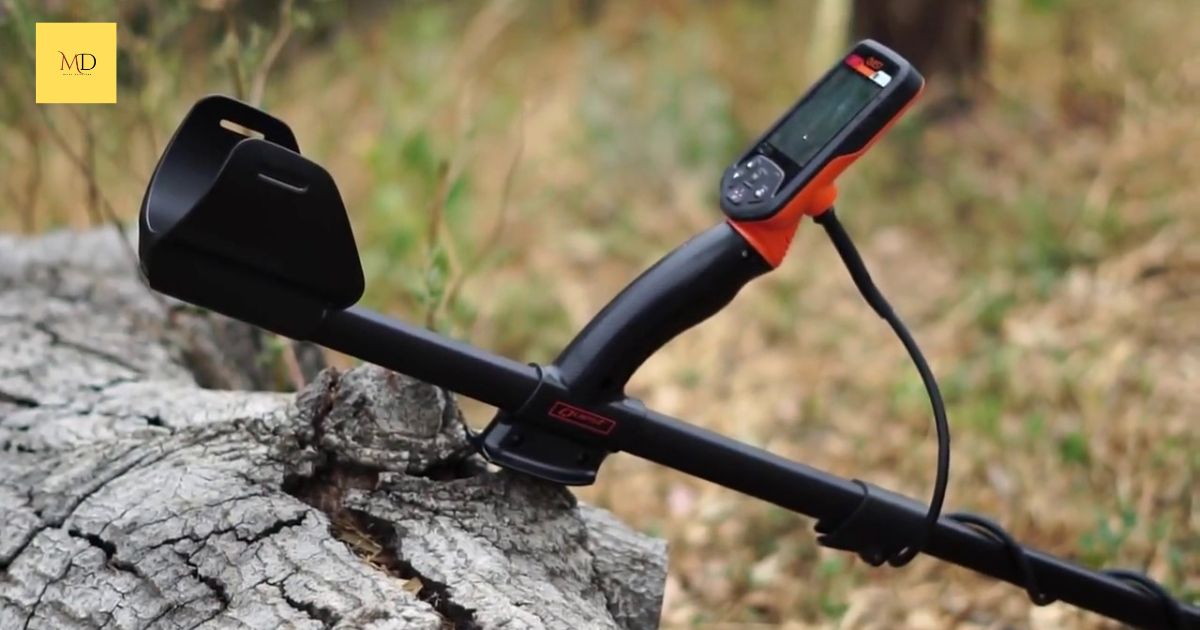Metal detectors are electronic devices that detect the presence of metal objects. They operate by generating a magnetic field and sensing disturbances caused by metal. Widely used in security screening, they help identify prohibited items like weapons at airports and public venues.
Ever wondered if that aluminum keychain in your pocket sets off metal detectors? The answer might surprise you! Join us on a quick journey to unravel the mystery behind aluminum and metal detectors. Discover the secrets that might make your next trip through security a breeze.
Yes, aluminum can trigger metal detectors. While aluminum itself is not magnetic, it can still set off metal detectors because of its electrical conductivity. This property allows metal detectors to detect the presence of aluminum objects, making it important to be mindful of aluminum items when passing through security checkpoints.
Properties of Aluminum
Aluminum is a versatile metal known for its unique properties. One distinctive characteristic is its non-magnetic nature, setting it apart from materials like iron and steel. This property makes aluminum particularly interesting in the context of metal detectors, as traditional metal detectors rely on magnetic fields to identify metal objects. Despite its lack of magnetism, aluminum can still be detected due to its high electrical conductivity.
Another noteworthy property of aluminum is its excellent electrical conductivity. While it doesn’t possess magnetic properties like some other metals, aluminum can efficiently conduct electricity. This feature has led to its widespread use in various industries, from electrical wiring to aerospace applications. In the realm of metal detectors, the electrical conductivity of aluminum plays a crucial role in triggering the sensors, even though it lacks magnetic attraction.
Non-Magnetic Nature
The non-magnetic nature of a material refers to its lack of magnetic properties. Unlike materials such as iron or steel, which are strongly attracted to magnets, non-magnetic substances, like aluminum, do not exhibit this magnetic response. This characteristic is crucial in understanding the behavior of certain metals in the presence of magnetic fields, particularly when it comes to their interaction with metal detectors.
In the context of metal detectors, the non-magnetic nature of aluminum is noteworthy because traditional metal detectors rely on magnetic fields to identify the presence of metallic objects. While aluminum itself is not magnetic, it possesses other properties, such as electrical conductivity, that still allow it to be detected by these devices. This unique combination of features makes aluminum an interesting case in the world of metal detection, prompting further exploration into how non-magnetic materials can still be identified and screened effectively.
Electrical Conductivity
Electrical conductivity refers to a material’s ability to conduct an electric current. In simpler terms, it measures how easily electrical charges, typically carried by electrons, can flow through a substance. Materials with high electrical conductivity, such as metals like copper and aluminum, allow electric current to pass through them easily, making them essential for various applications in electronics and power transmission.
The conductivity of a material depends on its atomic structure and the mobility of electrons within it. In metals, electrons are loosely bound to atoms, enabling them to move freely and carry electrical charges. This property makes metals valuable for the production of conductors in electrical wiring and components. On the other hand, insulating materials, like rubber or plastic, have low electrical conductivity, as their electrons are tightly bound and do not move easily, making them suitable for insulating and protecting electrical components from unwanted current flow.
How Metal Detectors Detect Aluminum

Metal detectors detect aluminum through the interaction of the metal with the device’s magnetic field. Although aluminum itself is not magnetic, it is an excellent conductor of electricity. When aluminum passes through a metal detector, it disturbs the magnetic field generated by the detector. This disturbance is then picked up by the detector’s sensors, signaling the presence of a metal object. While other metals may trigger the detector due to their magnetic properties, aluminum stands out for its ability to influence the magnetic field through electrical conductivity.
The process involves the metal detector sending out electromagnetic waves and then measuring the response from the object being scanned. In the case of aluminum, the metal detector registers the disruption caused by the metal’s conductivity, distinguishing it from non-metallic objects. This technology allows security personnel to identify and screen for potential threats or prohibited items, maintaining safety and order in various environments such as airports, public venues, and high-security areas.
Interaction with Magnetic Fields
When it comes to metal detectors, the interaction with magnetic fields plays a crucial role in their functionality. Metal detectors generate a magnetic field within their detection zone. When an aluminum object enters this zone, it disrupts the magnetic field, causing a reaction in the detector. Despite aluminum itself being non-magnetic, its presence alters the electromagnetic environment, signaling the metal detector to alert security personnel.
In essence, the interaction with magnetic fields allows metal detectors to identify a wide range of metallic objects, contributing to their effectiveness in various applications. From enhancing security at airports to aiding in treasure hunts, this fundamental principle of detecting disturbances in magnetic fields ensures that metal detectors can efficiently pinpoint the presence of metals, including aluminum, aiding in maintaining safety and security in diverse scenarios.
Sensitivity to Electrical Conductivity
Metal detectors rely on the principle of electrical conductivity to identify and alert the presence of metal objects. Electrical conductivity is a measure of how easily a material allows the flow of electric current. In the context of metal detectors, metals such as aluminum possess high electrical conductivity. When an aluminum object is exposed to the electromagnetic field generated by the metal detector, it induces eddy currents circulating electric currents within the metal.
The metal detector’s sensors can detect these induced currents, signaling the presence of a metal object, even if the material itself is not magnetic. This sensitivity to electrical conductivity allows metal detectors to effectively identify a wide range of metallic items, enhancing their utility in various applications, from security screenings to treasure hunting. Understanding the role of electrical conductivity in metal detection is crucial for designing efficient and reliable systems.
FAQ’s
Will a metal detector pick up aluminum?
Yes, a metal detector will pick up aluminum. Although aluminum is not magnetic, it has high electrical conductivity.
What metals do not set off a metal detector?
Non-ferrous metals, such as aluminum, copper, and brass, typically do not set off a standard metal detector because they are not magnetic.
Will a metal detector find aluminum wire?
Yes, a metal detector can find aluminum wire. While aluminum is not magnetic, it has high electrical conductivity.
Conclusion
In conclusion, the interaction between metal detectors and aluminum objects highlights the fascinating interplay of electrical conductivity in identifying metals. While aluminum itself lacks magnetic properties, its high electrical conductivity becomes the key factor that triggers metal detectors. This understanding is pivotal for individuals navigating security checkpoints where these detectors are employed, as common items like aluminum keys or accessories may prompt alerts during screenings.
Moreover, the broader implications of sensitivity to electrical conductivity extend beyond security applications. In fields such as archaeology and treasure hunting, this property allows enthusiasts to use metal detectors effectively in uncovering hidden metallic artifacts, providing valuable insights into our past. The intricate relationship between metal detectors and electrical conductivity not only enhances our ability to maintain safety but also contributes to the exploration of history, showcasing the versatility and significance of this technology in various aspects of our lives.











